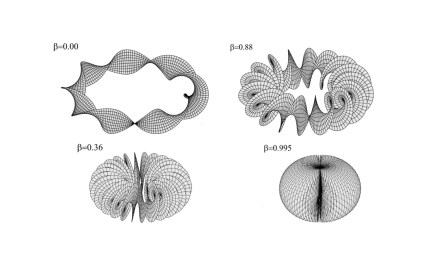Pushing the limits of how we see and manage magnetic behavior in tiny structures is key to developing future technologies, especially in electronics that use the spin of particles—a property related to quantum mechanics that influences magnetic behavior. This new research centers on a magnetic property called altermagnetism, a recently identified type of magnetism that doesn’t behave like traditional magnets. Unlike common magnets, altermagnets do not produce an overall magnetic field but still behave in ways that break the usual rules of time symmetry. This means their internal properties change if the direction of time is reversed. This rare mix of features allows for new uses in electronics where avoiding magnetic interference is important. Previously, scientists could only detect these behaviors by averaging signals over large areas. Now, for the first time, they have managed to see and influence them at incredibly small scales.
Leading this effort, researchers Dr. Oliver Amin, Professor Peter Wadley, and their team from the University of Nottingham worked with partners around the world to show how these magnetic patterns appear in a material called manganese telluride, a crystal made of manganese and tellurium atoms. Their work appears in Nature. They used special types of X-ray techniques that respond differently to magnetic directions, known as magnetic circular dichroism and magnetic linear dichroism. These techniques highlight different magnetic behaviors depending on the light’s polarization. By combining these methods with powerful microscopes, they created colorful maps that show how the internal magnetic directions are arranged. These images revealed swirling patterns, boundaries between different regions, and smooth areas where everything pointed in the same direction.
Dr. Amin and Professor Wadley’s working on very thin films of manganese telluride uncovered many types of magnetic patterns. They were able to shape these patterns by cutting the material into small shapes and adjusting the temperature while applying magnetic fields. Within tiny hexagons and triangles, they created spinning patterns and paired swirls that formed naturally. These patterns showed no magnetic pull from the outside, proving their special nature and usefulness in devices that must avoid interference from magnets.
One especially useful result was the ability to choose which way the internal directions pointed, just by cooling the material in a mild magnetic field. That allowed them to form smooth, steady areas about as wide as a human hair. In one example, a six-sided shape was able to change its pattern depending on the direction of the field used during cooling. Being able to do this shows how helpful altermagnetic materials could be for memory or computer devices that can be adjusted on demand.
“We directly experimentally determine that the order vector, which describes the direction and nature of the internal magnetic structure, makes a clockwise rotation by 360 degrees around the first vortex nanotexture,” Dr. Amin explained, referring to the observed vector field in manganese telluride. In another example, Professor Wadley noted, “the formation of an antivortex pair in the centre of the hexagon is then required to resolve the total winding angle of the order vector through 720 degrees.” These findings mark the first clear and detailed directional visualization of altermagnetic textures.
Seeing and adjusting these special magnetic patterns could be important for more than just physics. The team points out that these patterns are stable and can function quickly and efficiently, making them promising for future computer memory and systems inspired by how the brain works—known as neuromorphic computing. Because altermagnets can also work with materials that do not conduct electricity, such as insulators, or with those that have unusual flow of electrons, such as topological materials, they may fit well into new kinds of electronic devices.
Setting a solid foundation, this research opens the door to more studies of this unusual type of magnetism. It also shows how useful it is to combine powerful imaging tools with tiny manufactured structures and simple magnetic fields. As interest grows in finding new types of magnetic behavior that avoid the problems of traditional magnets, this work highlights what’s possible in both science and technology.
Journal Reference
Amin O.J., Dal Din A., Golias E., et al. “Nanoscale imaging and control of altermagnetism in MnTe.” Nature, 2024; 636: 348-353. DOI: https://doi.org/10.1038/s41586-024-08234-x
About the Authors

Dr. Oliver Amin is a physicist specializing in magnetism and nanoscale materials. Based at the University of Nottingham, he focuses on exploring emerging magnetic states in crystals and thin films. His research combines cutting-edge imaging tools and nanofabrication techniques to study magnetic order at extremely small scales. As one of the lead researchers in the recent study on altermagnetism in manganese telluride, Dr. Amin has contributed to advancing our understanding of magnetic behaviors that do not follow conventional rules. He is especially interested in materials that offer new possibilities for fast, efficient computing technologies.

Professor Peter Wadley is a leading expert in magnetic materials and spintronics at the University of Nottingham. His work centers on understanding how magnetism operates in materials that lack traditional magnetic fields but still exhibit useful electronic behavior. With a background in condensed matter physics, Professor Wadley has pioneered several techniques to control and visualize magnetism at the nanoscale. His research aims to bridge fundamental science with real-world applications in next-generation electronics.














































